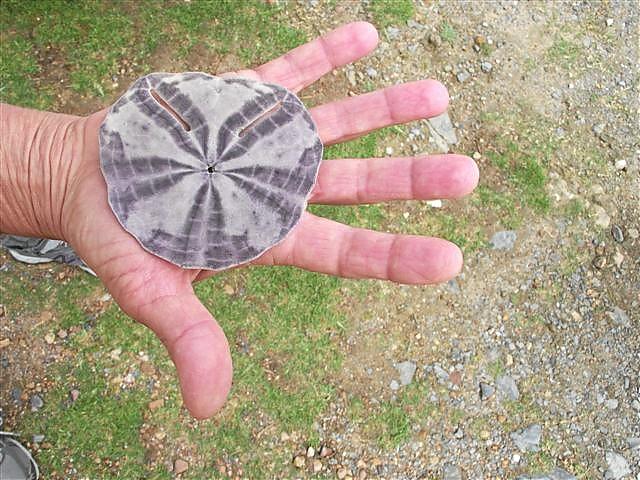Visitors to Witsand picked up an abnormally big Pansy on Witsand beach. A Pansy shell is very brittle and breaks easily, so to pick up one this big is a bonus.
The term sand dollar (sea cookie or snapper biscuit in New Zealand, or pansy shell in South Africa) refers to species of extremely flattened, burrowing sea urchins belonging to the order Clypeasteroida.
Some species within the order, not quite as flat are known as sea biscuits. Related animals include the sea cucumbers and starfish. The term "sand dollar" derives from the appearance of the tests (skeletons) of dead individuals after being washed ashore.
The test lacks its velvet-like skin of spines and has often been bleached white by sunlight. To beachcombers of the past, this suggested a large, silver coin, such as the old Spanish or American dollar (diameter 38-40mm).
In South Africa, they are known as pansy shells from their suggestion of a five-petaled garden flower. A variety of imaginative associations have been made by idle beachcombers who run across the bleached skeletons of dead sand dollars.
The tests are sometimes said to represent coins lost by mermaids or the people of Atlantis. Christian missionaries found symbolism in the fivefold radial pattern and dove-shaped internal structures.
'Aristotle's lantern' has been discerned in the distinctive perforations of keyhole sand dollars. (Source: Wikipedia).

The big Pansy shell (Echinarachinius parma) which was picked up on Witsand beach. Photo's: Lorraine Martin

















